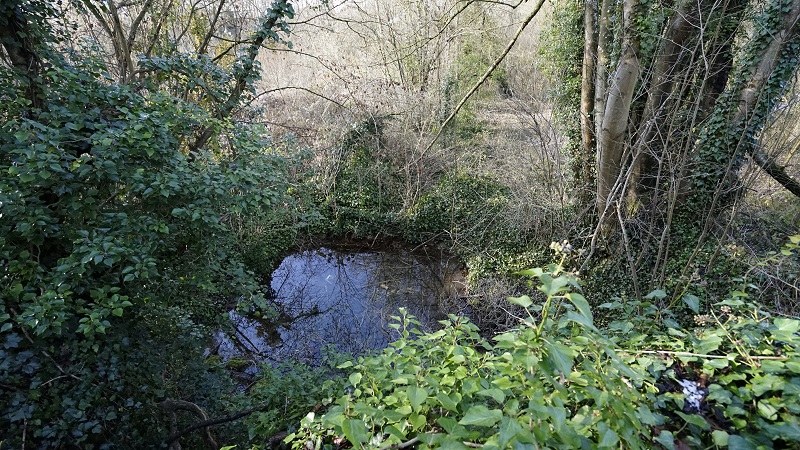Informations directionnelles
Continuer sur le chemin en direction du cœur de bourg. A l’intersection, emprunter le chemin de droite, puis de nouveau à droite, puis prendre à gauche pour longer la Viosne. Aller jusqu’au n° 2 de la rue de l’hôtel-Dieu.
Prochain point : lat="49.16594" lon="1.9389"
WATERCRESS CULTIVATION
An important crop in the 19th century
Because there’s water…
Watercress has been cultivated in France as far back as the early 19th century. The plant comes from the Middle East and grows wild in wet soil or submerged in clean, shallow, non-acidic and slow-moving water. Watercress is brimming with vitamins and other essential minerals.
The first step in the cultivation process is to dry the trenches prepared with a mixture of grains, soil and sand. Once the seeds have germinated, the trenches are refilled with water and the depth is increased as the plants grow. The next step is to plant out the seedling clumps into another trench spaced out in staggered rows. The watercress is ready for harvesting about one month after planting out. Growing watercress is a year-round affair: sowing, starting seedlings, planting out, cutting, cleaning the trenches, weeding the banks, and making the punnets for distribution.
…farms thrived
Watercress growers first set up in Chars in the 1860s and the first official applications for licences to grow the plant date back to 1863 for rented parcels of land in Clochard, Noisement and near the Beteaux and Bouillon fountains. Cress cultivation took off at the end of the 19th century. There were 18 cress farms listed in 1896 and 21 in 1906, most of them family farms. The last woman to grow cress in Chars stopped farming in 1988.




